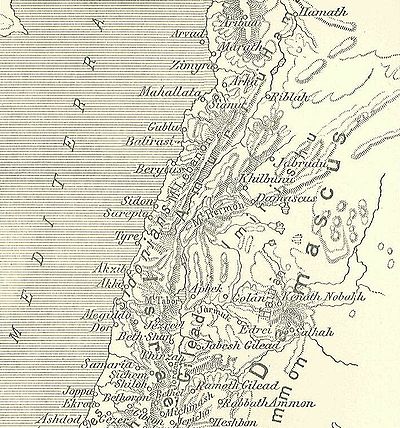
Enišasi
Encyclopedia

City-state
A city-state is an independent or autonomous entity whose territory consists of a city which is not administered as a part of another local government.-Historical city-states:...
located in the Beqaa Valley
Beqaa Valley
The Beqaa Valley is a fertile valley in east Lebanon. For the Romans, the Beqaa Valley was a major agricultural source, and today it remains Lebanon’s most important farming region...
-(called Amqu
Amqu
The Amqu is a region , equivalent to the Beqaa Valley region, named in the 1350-1335 BC Amarna letters corpus....
, or Amka) of Lebanon
Lebanon
Lebanon , officially the Republic of LebanonRepublic of Lebanon is the most common term used by Lebanese government agencies. The term Lebanese Republic, a literal translation of the official Arabic and French names that is not used in today's world. Arabic is the most common language spoken among...
, during the 1350-1335 BC Amarna letters
Amarna letters
The Amarna letters are an archive of correspondence on clay tablets, mostly diplomatic, between the Egyptian administration and its representatives in Canaan and Amurru during the New Kingdom...
correspondence
Text corpus
In linguistics, a corpus or text corpus is a large and structured set of texts...
. Of the 382–Amarna letters, Enišasi is only referenced in two letters. Enišasi was located near Hašabu, (Tell Hašbe), and Hasi, (Tell Hizzin?), southwest of Baalbek
Baalbek
Baalbek is a town in the Beqaa Valley of Lebanon, altitude , situated east of the Litani River. It is famous for its exquisitely detailed yet monumentally scaled temple ruins of the Roman period, when Baalbek, then known as Heliopolis, was one of the largest sanctuaries in the Empire...
.
Two 'mayors', or rulers of Enišasi were Šatiya
Šatiya
Šatiya, also Satiya, or Shatiya was the ruler-'mayor' of Enišasi, during the Amarna letters period of 1350-1335 BC. In the entire correspondence of 382–letters, his name is only referenced in his own letter to the Ancient Egyptian pharaoh, EA 187,...
and Abdi-Riša
Abdi-Riša
Abdi-Riša was a ruler-'mayor' of Enišasi, during the period of the Amarna letters correspondence . Another mayor of Enišasi, Šatiya, is found in the Amarna letters corpus. The name "Abdi-Riša" means "servant-Riša"....
, who each authored a letter to the Egyptian
Ancient Egypt
Ancient Egypt was an ancient civilization of Northeastern Africa, concentrated along the lower reaches of the Nile River in what is now the modern country of Egypt. Egyptian civilization coalesced around 3150 BC with the political unification of Upper and Lower Egypt under the first pharaoh...
pharaoh
Pharaoh
Pharaoh is a title used in many modern discussions of the ancient Egyptian rulers of all periods. The title originates in the term "pr-aa" which means "great house" and describes the royal palace...
, EA 187- (title: A daughter sent to the Pharaoh), and EA 363- (title: A joint report on Amqu
Amqu
The Amqu is a region , equivalent to the Beqaa Valley region, named in the 1350-1335 BC Amarna letters corpus....
–(4)). (EA is for 'el Amarna
Amarna
Amarna is an extensive Egyptian archaeological site that represents the remains of the capital city newly–established and built by the Pharaoh Akhenaten of the late Eighteenth Dynasty , and abandoned shortly afterwards...
'.)
See also
- Abdi-RišaAbdi-RišaAbdi-Riša was a ruler-'mayor' of Enišasi, during the period of the Amarna letters correspondence . Another mayor of Enišasi, Šatiya, is found in the Amarna letters corpus. The name "Abdi-Riša" means "servant-Riša"....
, mayor - ŠatiyaŠatiyaŠatiya, also Satiya, or Shatiya was the ruler-'mayor' of Enišasi, during the Amarna letters period of 1350-1335 BC. In the entire correspondence of 382–letters, his name is only referenced in his own letter to the Ancient Egyptian pharaoh, EA 187,...
, mayor - Amarna lettersAmarna lettersThe Amarna letters are an archive of correspondence on clay tablets, mostly diplomatic, between the Egyptian administration and its representatives in Canaan and Amurru during the New Kingdom...
- Amarna letters–localities and their rulersAmarna letters–localities and their rulersThis is a list of the "Amarna letters" –Text corpus, categorized by: Amarna letters–localities and their rulers. It includes countries, regions, and the cities/or 'city-states' ...

